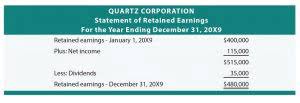How Much Is Workers Comp Insurance?

The rate for workers’ comp will differ depending on the type of work your employees do and the risk for injury on the job. If you underestimate payrolls, whether accidentally or not, you will have a large audit payment due the following year, so try to be as accurate as possible. The classification system, as mentioned above, depends on the industry of the business. If your industry employs laborers, your class will likely have a higher workers’ compensation rate because of its classification code.
Unfortunately, workers’ compensation premiums can be difficult to determine because the cost depends on state requirements. Key factors affecting workers compensation insurance premiums are your industry, payroll and claims history. Your state’s worker compensation laws will impact your workers compensation premium as well.
How to Calculate the Cost of Workers’ Compensation
Employers should discuss with their insurance carrier what types of safety programs will help them get a discount on the policy. Employers should also work with insurance carriers to report fraud. If employers can reduce fraud, they can help reduce the overall costs of policies. To find the workers’ compensation cost per employee, take the total annual premium calculated in step 6 and divide it by the total number of employees working within your company.
- Setting competitive prices involves choosing prices for your products or services that are appealing to customers compared to what other businesses are charging.
- A staff who only performs clerical duties will have a lower chance of being injured on the job than an employee who bathes cats and dogs.
- Geographic location refers to where a business is situated, which can impact its labor costs.
- The average workers’ compensation rates for every $100,000 in payroll can range from a few hundred dollars in premium to a few thousand dollars in premium.
- An independent insurance agent is a great resource to have when it comes to knowing the ins and outs of workers’ compensation coverage.
Now that you know how workers’ comp is calculated, you can figure out how much you will need to pay. You’ll simply divide your annual payroll by 100, multiply it by how to calculate workers comp cost per employee your class code rate, and multiply it again by your MOD. Your insurance company won’t just consider the general risk of the work your employees are performing.
More Answers to Frequently Asked Workers’ Comp Insurance Questions
In this post, we’ll discuss how it works and what differentiates us from competitors. Implementing workforce management software can greatly improve how a business handles its workforce and can lead to significant cost savings and efficiency gains. You want to find a balance where the price is enough to cover your costs and make a profit, but not too high that customers go somewhere cheaper. Candace Jenkins is a licensed insurance advisor with over a decade of experience. Candace writes for TrustedChoice.com on a continuous basis and is here with the facts about all your insurance inquiries. Christine Lacagnina has written thousands of insurance-based articles for TrustedChoice.com by authoring consumable, understandable content.
Employers are legally responsible for acquiring and paying for a workers’ compensation policy for their employees. This is not a benefit that the employees get that is paid partially out of paycheck deductions. Multiply the rate provided by the insurance carrier by the payroll amount from step 3. Next, multiply this product by your EMR to get your annual workers’ compensation premium. The EMR is a numerical representation of your company’s safety record in comparison to the industry average. If your business has fewer claims than the industry average, your EMR will be less than 1.0, lowering your workers’ comp premium.
Why Unorthodox Scheduling Improves Time Management
In exchange for workers’ comp benefits, employees have limited rights when it comes to seeking legal action against an employer. In Pennsylvania, workers’ comp pays 66% or two-thirds of an employee’s average weekly wage, up to the state max of $1,273 (for 2023). That’s assuming the employee makes between $954.76 and $1,909.50 per week. In Wisconsin, workers’ comp pays up to two-thirds of an employee’s average weekly wage, not to exceed the state maximum, which is $1,870.50 for 2023.

In general, though, if you have at least one full-time or part-time employee, you’ll need coverage. Each state also has different rules for when an employee will get paid. For example, in New York, if you are unable to work for more than seven days, the payout begins within 18 days of the date of injury. So, while you can get a pretty good idea of your average rate, there’s no way to come up with an exact number until you’ve talked to your insurance agent.







